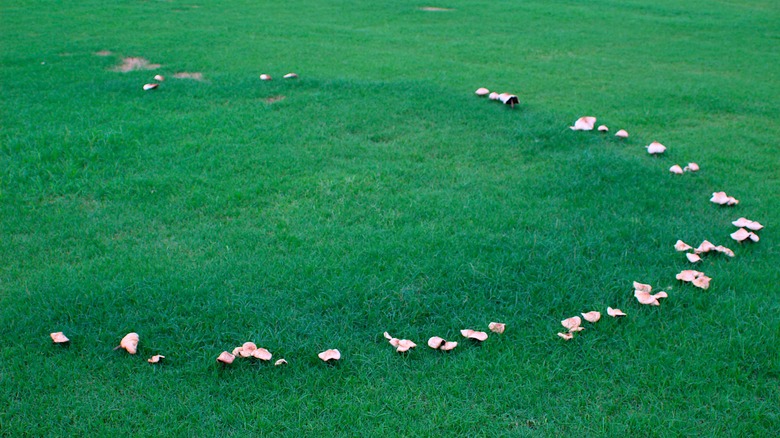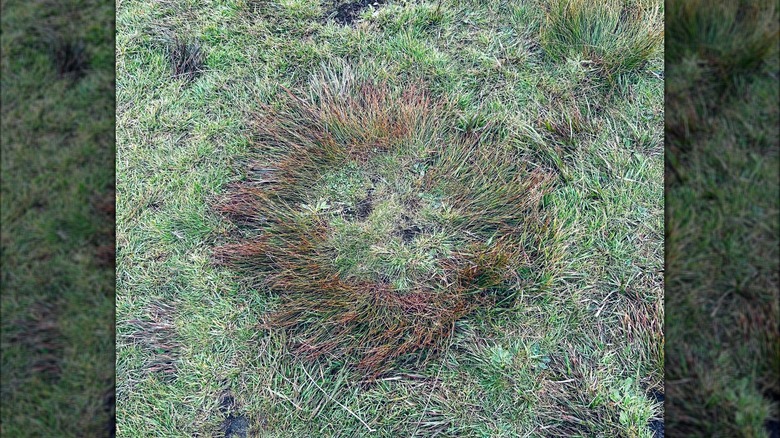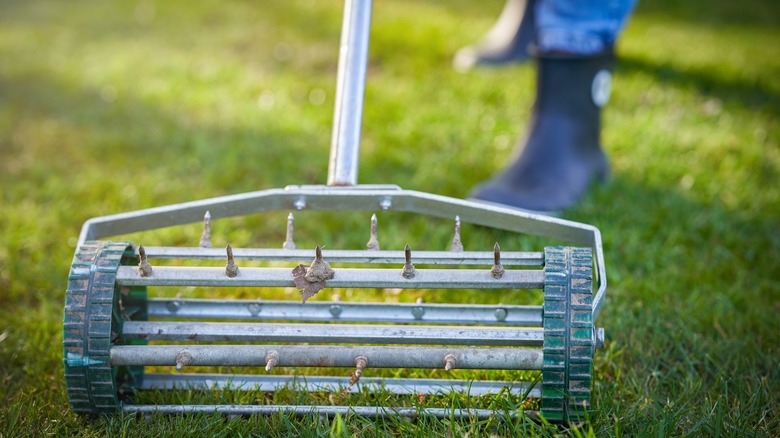Can Baking Soda Make Fairy Rings In Your Lawn Disappear? Here's What You Should Know
Whether you know about fairy rings or fae traps from TikTok or you've been trapped by them yourself, they are an odd phenomenon. Despite their cutesy name, they can be maddening for homeowners who want to be rid of them. Some say that baking soda is a way to fix a fairy ring in the lawn, but we were curious if that hack really works. So we reached out to Bryan Clayton, CEO of GreenPal, to get the dirt on these bizarre happenings. In speaking exclusively to House Digest, Clayton explained that these fairy rings happen because of underground fungus caused by decaying matter like roots, and baking soda is not likely to combat them.
"They manifest as circles or arcs of lush green grass, sometimes accompanied by a ring of mushrooms," the expert explained. "They're identified by these characteristic circles and a difference in grass color or density within the affected area." Although a unique, albeit perhaps unwanted, addition to a yard, they can be damaging which is why homeowners may want to get rid of them.
Clayton said that the growing fungus creates hydrophobic soil. Once the soil is water-repellent, it can't receive hydration properly which can negatively affect your grass. "Although some folks might find them aesthetically pleasing or intriguing, most want them gone because they can harm lawn health and uniformity," he added.
Why baking soda won't get rid of fairy rings
Once a fairy ring crops up in your yard, your first thought may be what can you do about it? Aside from fungicides, some homeowners want a more natural solution. That's why baking soda became a topic of possible elimination methods. Bryan Clayton, speaking exclusively to House Digest, said it makes sense to use baking soda because it is non-toxic. But, "while baking soda is known for its fungicidal properties due to its ability to disrupt fungal growth, it's generally not effective enough for something as aggressive as fairy rings, especially in larger yards," he explained. "You might end up spending more on baking soda than you would on a commercial fungicide without achieving the desired result."
One great element of baking soda is that it can be used around both pets and children without a problem, Clayton said. "However, the downside is its potential ineffectiveness on larger or more persistent fairy rings and the cost inefficiency for larger applications." Perhaps baking soda is better suited to destroying fungus in your garden rather than in the yard.
How to prevent and control fairy rings
So baking soda may not be the ultimate fairy ring destroyer. Is there a solution that Bryan Clayton does recommend? "In my experience the only way to combat fairy rings is to use a commercial-grade fungicide from a reputable landscaping supply house like Site One," he told House Digest in an exclusive interview. "These products are specifically formulated to tackle tough lawn fungi and can penetrate the soil more effectively."
However, before you even have to consider tackling a ring problem, there are steps you can take to prevent them in the first place. Clayton said that one way to do that is to not water your yard at night, as this can facilitate fungus growth. He also advised keeping your lawn well-aerated to maintain its health, which can negate the growth of fairy rings. It seems that preventing this phenomenon from happening doesn't take any magic at all — just some lawn TLC.


